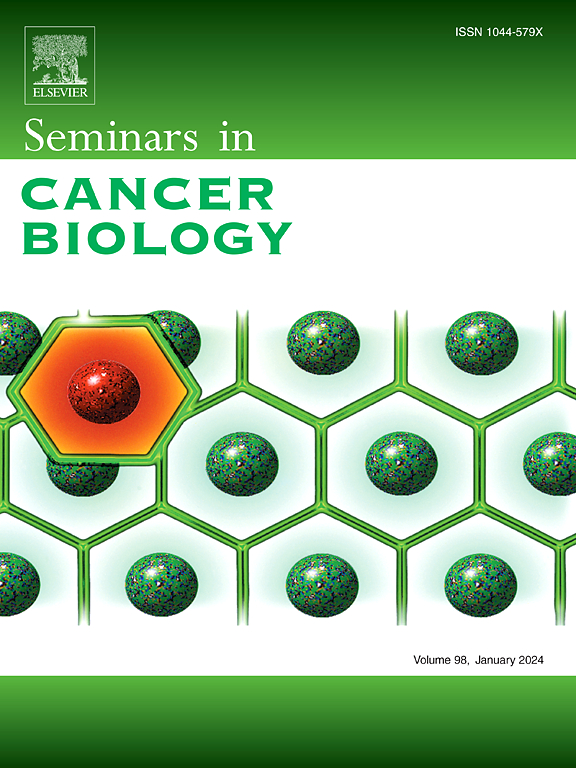Mathematical models of intercellular signaling in breast cancer
IF 12.1
1区 医学
Q1 ONCOLOGY
引用次数: 0
Abstract
Background and objectives
The development and regulation of healthy and cancerous breast tissue is guided by communication between cells. Diverse signals are exchanged between cancer cells and non-cancerous cells of the tumor microenvironment (TME), influencing all stages of tumor progression. Mathematical models are essential for understanding how this complex network determines cancer progression and the effectiveness of treatment.
Methodology
We reviewed the current dynamical mathematical models of intercellular signaling in breast cancer, examining models with cancer cells only, fibroblasts, endothelial cells, macrophages and the immune system as whole. We categorized the goals and complexity of these models, to highlight how they can explain many features of cancer emergence and progression.
Results
We found that dynamical models of intercellular signaling can elucidate tissue-level dysregulation in cancer by explaining: i) maintenance of non-heritable intratumor phenotypic heterogeneity, ii) transitions between tumor dormancy and accelerated invasive growth, iii) stromal support of tumor vascularization and growth factor enrichment and iv) suppression of immune infiltration and cancer surveillance. These models also provide a framework to propose novel TME-targeting treatment strategies. However, most models were focused on a highly selected and small set of signaling interactions between a few cell types, and their translational applicability were severely limited by the availability of tumor-specific data for personalized model calibration.
Conclusions and implications
Mathematical models of breast cancer have many challenges and opportunities to incorporate signaling. The four key challenges are: 1) finding ways to treat signaling networks as a context-dependent language that incorporates non-linear and non-additive responses, 2) identifying the key cell phenotypes that signals control and understanding the feedbacks between signals and phenotype that determine the progression of cancer, (3) estimating parameters of specific patient tumors early in treatment, 4) linking models with novel data collection methods that have single cell and spatial resolution. As our approaches advance, it is our hope that dynamical mathematical models of inter-cellular signaling can play a central role in identifying and testing new treatment strategies as well as forecasting impacts of disease treatment.
求助全文
约1分钟内获得全文
求助全文
来源期刊

Seminars in cancer biology
医学-肿瘤学
CiteScore
26.80
自引率
4.10%
发文量
347
审稿时长
15.1 weeks
期刊介绍:
Seminars in Cancer Biology (YSCBI) is a specialized review journal that focuses on the field of molecular oncology. Its primary objective is to keep scientists up-to-date with the latest developments in this field.
The journal adopts a thematic approach, dedicating each issue to an important topic of interest to cancer biologists. These topics cover a range of research areas, including the underlying genetic and molecular causes of cellular transformation and cancer, as well as the molecular basis of potential therapies.
To ensure the highest quality and expertise, every issue is supervised by a guest editor or editors who are internationally recognized experts in the respective field. Each issue features approximately eight to twelve authoritative invited reviews that cover various aspects of the chosen subject area.
The ultimate goal of each issue of YSCBI is to offer a cohesive, easily comprehensible, and engaging overview of the selected topic. The journal strives to provide scientists with a coordinated and lively examination of the latest developments in the field of molecular oncology.
 求助内容:
求助内容: 应助结果提醒方式:
应助结果提醒方式:


